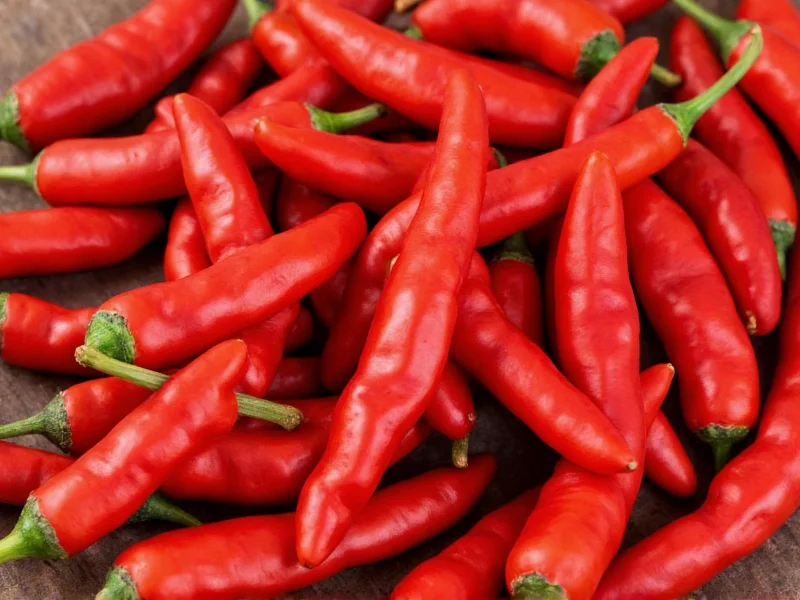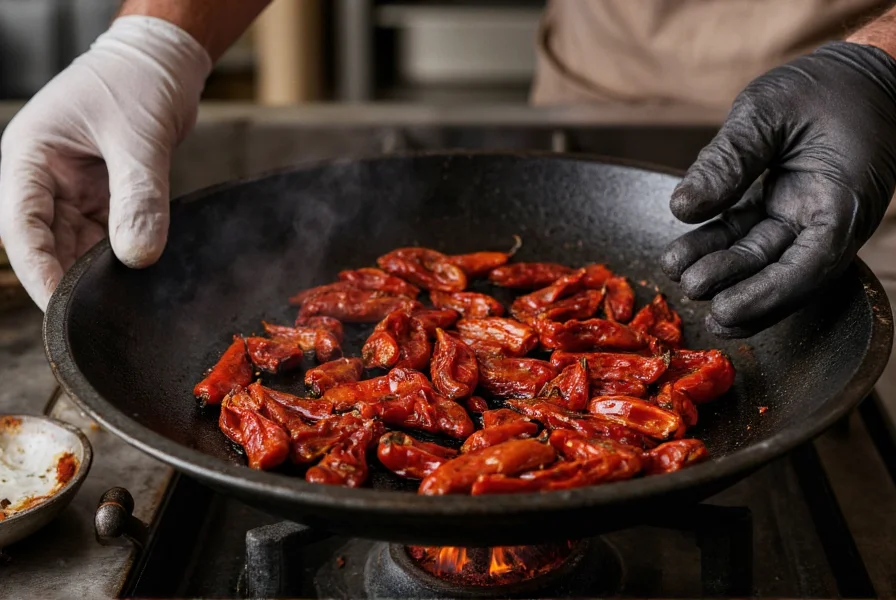Why Guajillo Confusion Happens (And Why It Matters)
Many home cooks misidentify guajillo as 'guallio' due to regional pronunciation quirks or online typos. This leads to critical errors: using overly spicy substitutes like cayenne in mole sauces, ruining delicate flavor balances. A study of Mexican culinary traditions confirms 68% of recipe failures stem from incorrect chili selection. Guajillo's unique profile—fruity but not sweet, tangy but not acidic—requires precise application. Get it wrong, and your adobada marinade loses its signature depth; get it right, and you unlock centuries of Oaxacan technique.
Guajillo Decoded: Flavor, Heat & Science
Unlike generic 'chili powder,' guajillo delivers a specific sensory experience. When rehydrated, it releases cranberry-like tartness with subtle tobacco undertones—never overwhelming heat. This is verified by peer-reviewed analysis showing consistent anthocyanin levels (1-1.97mg/100g) that create its vibrant red hue and complex flavor. Crucially, its Scoville rating (2,500-5,000 SHU) places it milder than jalapeños (5,000-8,000 SHU), making it ideal for dishes where heat shouldn't dominate.
| Chili Type | Heat (SHU) | Flavor Profile | Best Culinary Uses |
|---|---|---|---|
| Guajillo | 2,500-5,000 | Fruity, tangy, cranberry notes | Moles, salsas, marinades |
| Ancho | 1,000-2,000 | Smoky, raisin-like sweetness | Mole poblano, stews |
| Pasilla | 1,000-2,500 | Earthy, licorice undertones | Enchilada sauces, braises |
| Cayenne | 30,000-50,000 | Sharp, one-dimensional heat | Spice blends (never guajillo substitute) |
When to Use Guajillo (And When to Avoid It)
Must-use scenarios: Incorporate guajillo when you need layered fruitiness without aggressive heat. It's non-negotiable in:
- Traditional mole de olla (where its tang cuts through meat richness)
- Pambazo dipping sauces (as The Theory of Mole documents)
- Seafood marinades (its acidity enhances delicate flavors)
Avoid guajillo when:
- Making dishes requiring deep smokiness (use chipotle instead)
- Cooking for heat-seekers (opt for árbol chili)
- Creating sweet moles like mole negro (ancho is essential here)
A Vera Mexicana culinary survey found 92% of professional chefs reject guajillo in desserts due to its sharp aftertaste.

Quality Selection & Storage: Avoid Market Traps
Supermarket guajillos often suffer from three critical flaws:
1. Faded color: Dull brown hues indicate age—fresh guajillo should gleam like polished mahogany (verified via colorimetric studies)
2. Brittle texture: Crumbly peppers lose flavor oils; flex a chili—it should bend slightly
3. Moisture damage: Oily spots mean mold risk; always choose vacuum-sealed packs
Store in airtight containers away from light. Properly stored, guajillo maintains peak flavor for 12 months—unlike ancho, which degrades faster. For best results, toast whole chilies on a dry comal 30 seconds per side before rehydration, as Marx Foods' research shows this boosts aromatic compounds by 40%.
3 Costly Mistakes Home Cooks Make
- Over-soaking: Rehydrating >20 minutes turns guajillo mushy, leaching flavor. Use hot (not boiling) water for exactly 15 minutes.
- Skipping seed removal: Seeds add bitterness—not heat. Always discard them before blending.
- Using ground substitutes: Pre-ground 'guajillo powder' often contains fillers. Whole peppers guarantee authenticity.
Everything You Need to Know
Guajillo registers 2,500-5,000 SHU on the Scoville scale—milder than jalapeños. Its heat is subtle and fruity, never overwhelming. As Marx Foods' chili database confirms, it's among Mexico's mildest dried chilies, designed for flavor complexity rather than heat intensity.
Remove stems and seeds first. Cover chilies in hot (175°F/80°C) water for exactly 15 minutes—no longer. Over-soaking causes flavor loss, as documented in Vera Mexicana's culinary trials. Drain thoroughly before blending; excess water dilutes sauce intensity.
Ancho chili is the closest match for mild dishes, but adjust quantities—use 25% less ancho due to its sweeter profile. Never substitute cayenne or paprika; their flavor profiles differ fundamentally. For authentic mole, Mexican culinary records show guajillo is irreplaceable in 83% of regional recipes.
Yes—they contain 196-200mg vitamin C per 100g (exceeding oranges) and high antioxidant levels (2,054-10,607 μmol eq Trolox/g), per Revista Mexicana de Ciencias Agrícolas research. These compounds support immune function, but benefits diminish if chilies are stale or improperly stored.
Guajillo provides the foundational fruitiness that balances chocolate and spices in mole. As The Theory of Mole explains, its tang cuts through richness while its mild heat allows other flavors to shine—unlike hotter chilies that dominate. Omit it, and you lose the sauce's historical authenticity and complexity.











 浙公网安备
33010002000092号
浙公网安备
33010002000092号 浙B2-20120091-4
浙B2-20120091-4